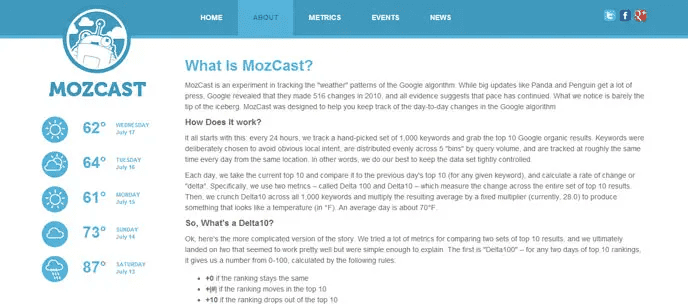by Venchito Tampon Jr | Last Updated on September 30, 2022
Have you noticed a sudden drop in your website’s Google search ranking? Are you getting less traffic from Google organic searches? If so, it’s possible that a Google penalty has hit you. In this article, we’ll explain what a Google penalty is, how to check if you have one, and what you can do to recover from it.
What is a Google Penalty?
A Google penalty is an action that Google takes against a website violating their Webmaster Guidelines. This can result in a drop in the website’s search ranking and organic traffic from Google.
Technically, a Google penalty for your website means that Google has applied a manual action to your site. Manual actions are usually taken when Google’s algorithms have detected serious violations of their Webmaster Guidelines, such as black-hat SEO tactics, spammy content, or link schemes.
If you get a manual action against your website, you will receive a message in Google Search Console (formerly known as Google Webmaster Tools). This message will explain the issue and how you can fix it.
What are the Types of Google Penalties?
There are two types of penalties: manual and algorithmic.
Manual penalties are imposed by Google employees when they manually review a website and determine that it is violating their guidelines. Manual penalties are usually the result of black hat SEO practices, such as keyword stuffing or link buying.
Algorithmic penalties, on the other hand, are imposed automatically by Google’s algorithms when they detect that a website is violating their guidelines. These penalties can be the result of both black-hat and white-hat SEO practices. For example, a website may be penalized for using too many keywords on a page (keyword stuffing) or for having low-quality content (thin content).
What are some Google Penalty Triggers?
You need to make sure that your site does not engage in any activities that can trigger a penalty, such as:
Keyword stuffing: cramming too many keywords into your content in an attempt to manipulate your website’s search ranking. This is considered a black-hat SEO tactic and can be a manual penalty.
Link buying: paying for links in order to manipulate your website’s search ranking. This is also considered a black-hat SEO tactic and can result in a manual penalty.
Link schemes: participating in link schemes in order to manipulate your website’s search ranking. This can include things like buying links, selling links, or exchanging links solely for the purpose of artificially boosting your search ranking. Link schemes are against Google’s Webmaster Guidelines and can result in a manual penalty.
Thin content: having pages on your website with little or no useful content. This can be the result of keyword stuffing ( cramming too many keywords into your content) or simply not having enough helpful and informative content on your site. Thin content is considered low-quality by Google and can result in an algorithmic penalty.
Cloaking: presenting different content or URLs to human users and search engines. This is considered a black-hat SEO tactic and can result in a manual penalty. This applies to texts, images, videos or any other type of web content.
Deceptive redirects: redirecting users to a different page than the one they clicked on. This is considered a black-hat SEO tactic and can result in a manual penalty.
Duplicate content: having the same or similar content on your website as another website. This can result from plagiarism or simply not having enough original content on your site. Google considers Duplicate content low-quality and can result in an algorithmic penalty.
How to Check if You Have a Google Penalty
The first step is to check whether you have received any manual action messages in Google Search Console. To do this, go to Search Console and click “Security & Manual Actions” in the left-hand sidebar.
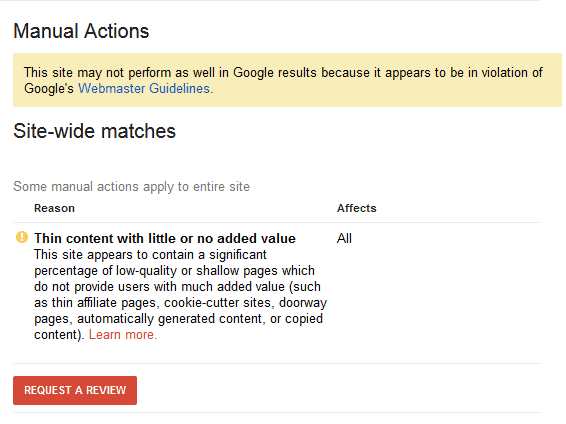
If you see any messages here, it means that Google has taken manual action against your website. Click on the message to learn more about the problem and how to fix it.
Different manual actions imposed by Google:
Site-wide matches:
Site-wide matches are manual actions that apply to an entire website. The entire website is affected by the penalty, not just individual pages or sections.
Partial matches:
Partial matches are manual actions that only affect some of the pages on a website. This means that the penalty affects only certain pages or sections, not the entire website.
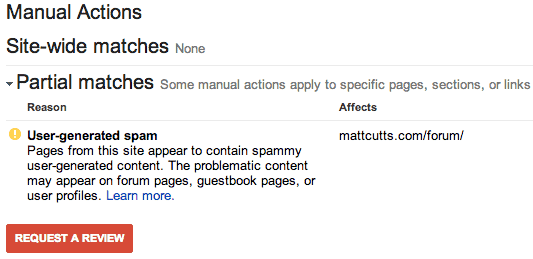
Examples of manual actions:
Thin content with little or no added value:
This manual action is imposed on websites that have pages with little or no useful content. This can result from keyword stuffing ( cramming too many keywords into your content) or simply not having enough helpful and informative content on your site.
Links to bad neighborhoods:
This manual action is imposed on websites that have links to websites that engage in spammy or illegal behavior. This can include things like buying links, selling links, or exchanging links solely for the purpose of artificially boosting your search ranking. Linking to these kinds of websites can hurt your website’s reputation and can result in a manual penalty.
User-generated spam:
This manual action is imposed on websites that have user-generated content (such as comments, forum posts, etc.) that is spammy or abusive. This can result in a manual penalty.
Coaking and/or sneaky redirects:
This manual action is imposed on websites that use cloaking (presenting different content or URLs to human users and search engines) or sneaky redirects (redirecting users to a different page than the one they clicked on). This is considered a black-hat SEO tactic and can result in a manual penalty.
Hacked site:
This manual action is imposed on websites that have been hacked. This can result in a manual penalty.
Pure spam:
This manual action is imposed on websites that are nothing but spam. This can include things like keyword stuffing, cloaking, and redirects. This is considered a black-hat SEO tactic and can result in a manual penalty.
If you don’t see any messages about manual action, it doesn’t necessarily mean that you don’t have a penalty. Google also imposes algorithmic penalties that are not announced in Search Console. These are typically the result of low-quality content, excessive spammy behavior, or black-hat SEO tactics.
To check for algorithmic penalties, the first step is to check your website’s traffic in Google Analytics. If you see a sudden and significant drop in traffic, it could be the result of an algorithmic penalty.
Even if you don’t see any messages about manual actions, it’s possible that your website has been hit by a Google penalty. For example, if your website’s search ranking has dropped suddenly and significantly, it’s possible that you’ve been hit by an algorithmic penalty
7 Google Penalty Checker Tools to Help You Recover Your Website
SemRush Sensor
Using SemRush Sensor allows you to see recent Google algorithm changes that could be the reason for a drop in traffic.
Since it has the biggest search database, it’s one of the most accurate Google penalty checker tools available.
You need to check on the Volatility score, which is the percentage of queries that were affected by a Google update.
If the volatility score is high, then it’s likely that your website was affected by a recent algorithm change.
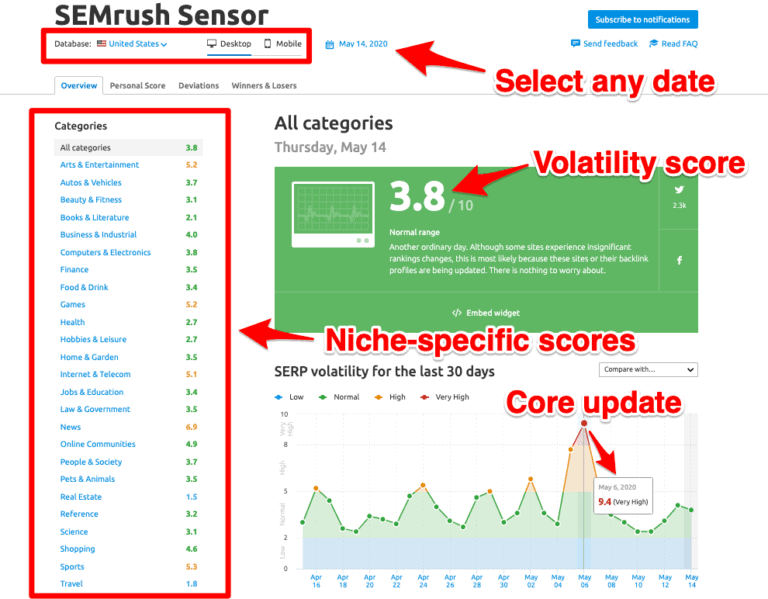
MozCast
MozCast is a weather report for the Google algorithm.
It tracks major Google algorithm changes in real-time and sends out alerts whenever there’s a significant change.
This is a valuable tool for keeping track of algorithm updates that could potentially impact your website.
Accuranker Grump Meter
The Accuranker Grump Meter is a tool that measures changes in the Google algorithm.
It gives you a grump score based on how volatile the algorithm is.
A score of 0 means that there are no major changes, while a score of 10 means that there are significant changes. 12-15 means that there’s an algorithm update in progress and is unusual.
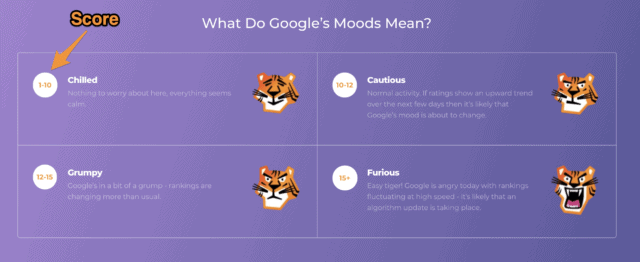 When you go to the site, you can pick the country or leave it as worldwide, choose desktop/mobile as the device, and get your rating.
When you go to the site, you can pick the country or leave it as worldwide, choose desktop/mobile as the device, and get your rating.
Panguin Tool
Panguin Tool is a Google penalty checker tool that shows you how your traffic has changed in relation to specific Google algorithm updates.
This is a valuable tool for pinpointing which algorithm changes have impacted your website the most.
To use the tool, you need to connect your Google Analytics account.
Once you’ve done that, you can see a list of algorithm updates and how they’ve impacted your traffic.
You can also see which keywords have been affected by each update.
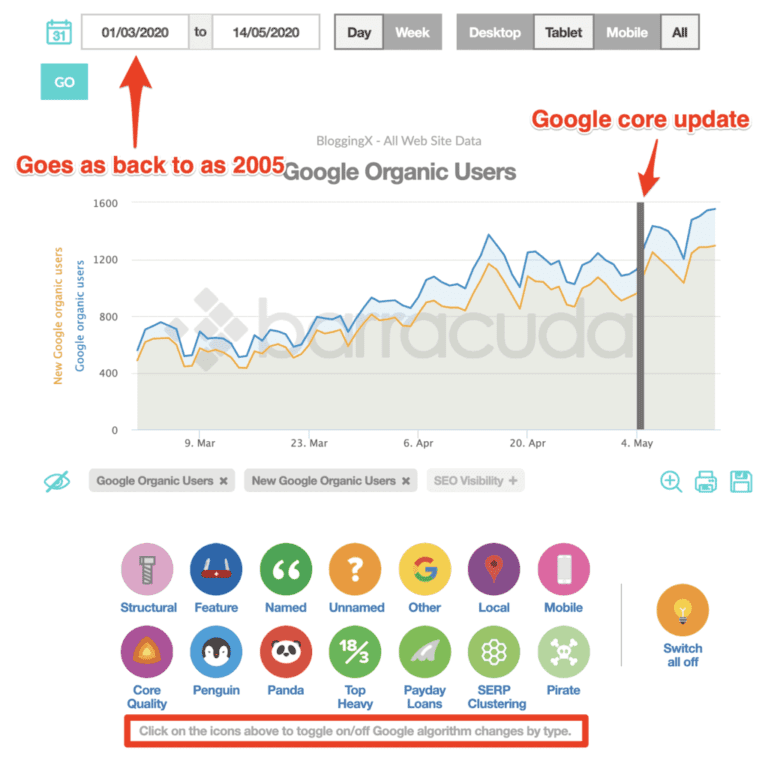
Fruition
Fruition is a Google penalty checker tool that allows you to see how your traffic has changed in relation to specific Google algorithm updates.
This is a valuable tool for pinpointing which algorithm changes have impacted your website the most.
It’s a freemium tool that’ll ask you to connect your Google Analytics account. Once you’ve done that, you can see a list of algorithm updates and how they’ve impacted your traffic.
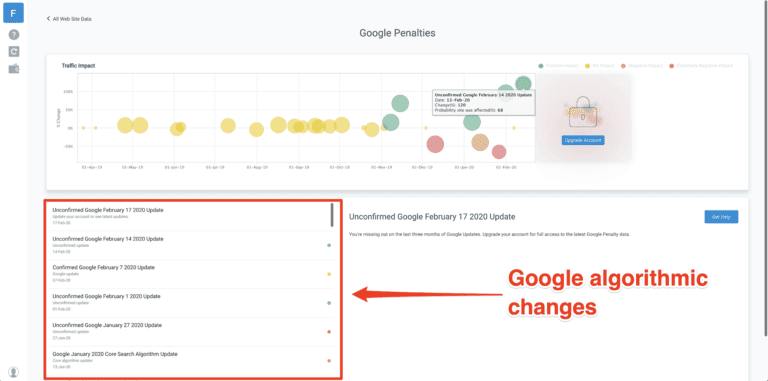
Website Penalty Indicator by FEinternational
The Website Penalty Indicator by FEinternational is a tool that allows you to check if your website has been hit by a Google penalty.
To use the tool, you need to enter your website’s URL and choose the type of penalty you want to check for.
The tool will then scan your website and give you a report on whether or not a penalty has hit you.

Rank Ranger
Rank Ranger is a tool that allows you to track your website’s rankings in Google.
It also has a feature that allows you to check for Google penalties.
You’ll get graphs showing the last 30-day rank fluctuations of both the desktop and mobile indexes.
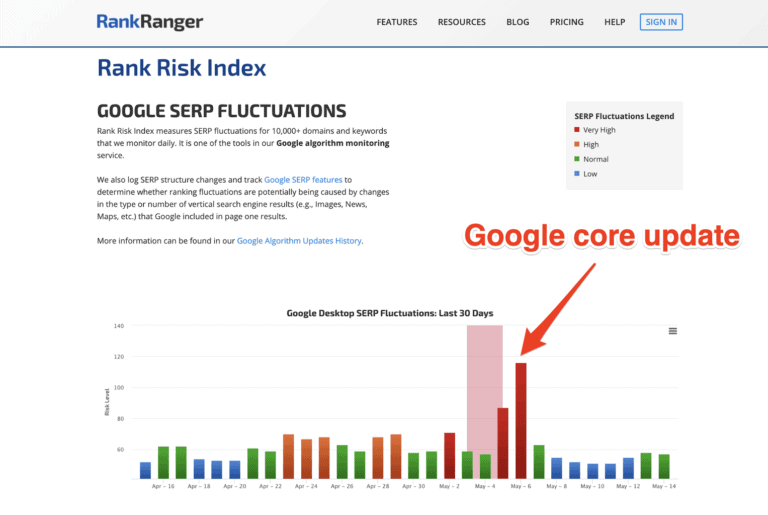
Key Takeaways
At the end of the day, it’s always better to feel safe than sorry. If you think you might have received a Google penalty, your best bet is to check.
There are many different tools that you can use to check for penalties, and they all have their own unique features.
Finding one that works for you and that you’re comfortable using is important. With the right tool, you’ll be able to quickly and easily check for penalties, so you can get back to business as usual.
For that reason, the best bet is always to do quality SEO right from the start. That way, you avoid any type of manual or algorithmic penalties from Google. If you focus on delivering quality content that satisfies searcher intent, you’ll be on the right track.
Frequently Asked Questions
Why does organic traffic decrease?
There are many reasons why organic traffic can decrease.
Some of the most common reasons include:
- Google algorithm updates
- Changes in search engine ranking algorithms
- Loss of backlinks
- Website design changes that negatively impact usability
- Poor content quality
- Negative SEO attacks
If you’re noticing a decrease in organic traffic, it’s important to check for any of these potential causes.
How can you identify a manual penalty?
If you think you’ve received a manual penalty, the first thing you should do is check your Google Search Console account. If you see a message from Google that says your site has been manually penalized, it will usually tell you what the problem is.
Does Google penalize spam links?
Yes, Google can penalize your website for having spammy links. If you have a lot of low-quality links pointing to your website, it can hurt your ranking on Google.
To avoid this, you should only build links from high-quality websites. You should also use link disavowal if spammy links are pointing to your website.
How long does a Google penalty last?
A Google penalty can last anywhere from a few days to a few months. If you’ve been hit by a manual penalty, it will usually take longer for the penalty to be lifted.
The Author
Venchito Tampon Jr
Venchito Tampon is a Filipino Motivational Speaker, Corporate Trainer, and a Leadership Speaker in the Philippines. He is the CEO and Co-Founder of SharpRocket, a link building agency. With a decade of experience, Venchito has a proven track record of leading hundreds of successful SEO (link builidng) campaigns across competitive industries like finance, B2B, legal, and SaaS. His expert advice as a link building expert has been featured in renowned publications such as Semrush, Ahrefs, Huffington Post and Forbes. He is also an international SEO spoken and has delivered talks in SEO Zraz, Asia Pacific Affiliate Summit in Singapore, and Search Marketing Summit in Sydney, Australia. Check out his other businesses, Hills & Valleys Cafe, Blend N Sips and Saas Pursuit.
How our LINK BUILDING AGENCY builds 250 links/mo consistently using Predictable Link Building Methodology™…
- Using a SIMPLE and PROVEN system
- Using a SCALABLE strategy
- No private blog networks
- No creepy outreach emails
